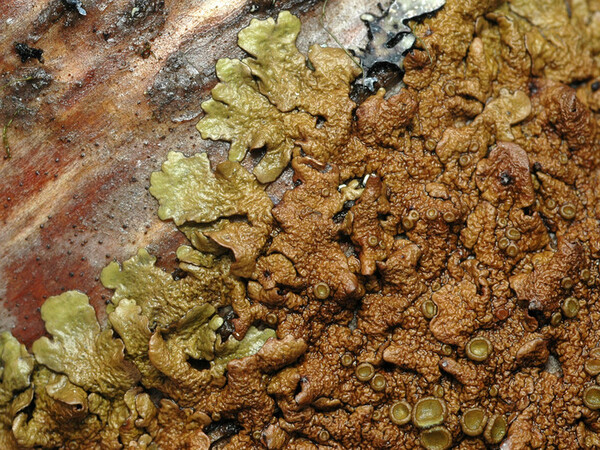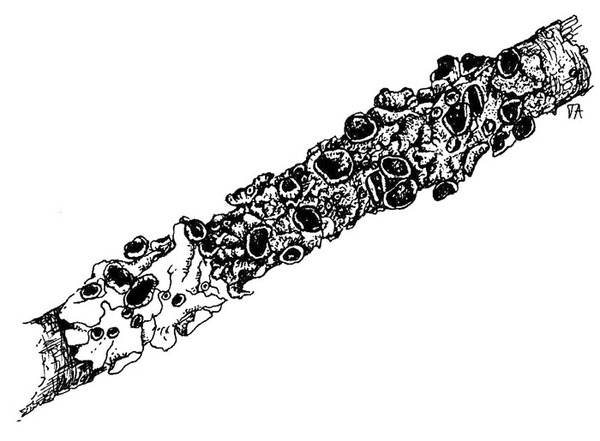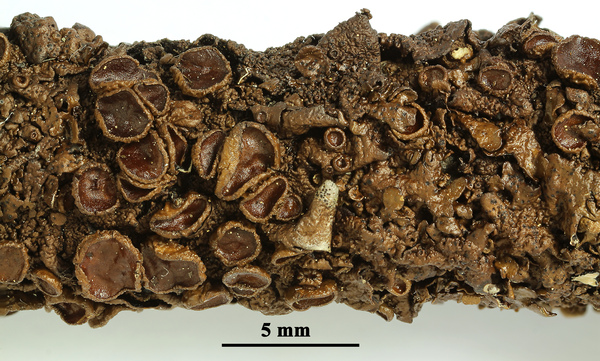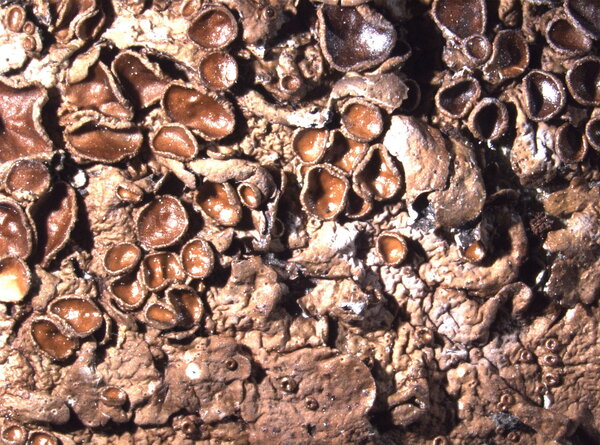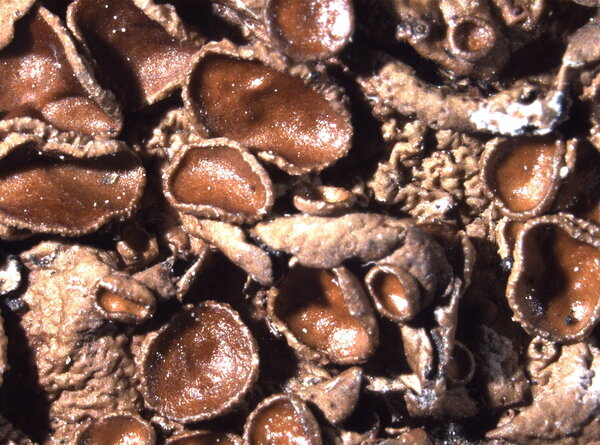Melanohalea olivacea (L.) O. Blanco, A. Crespo, Divakar, Essl., D. Hawksw. & Lumbsch
Mycol. Res., 108: 882, 2004. Basionym: Lichen olivaceus L. - Sp. Pl.: 1143, 1753, nom. cons.
Synonyms: Imbricaria olivacea (L.) DC.; Melanelia olivacea (L.) Essl.; Parmelia olivacea (L.) Ach.
Distribution: N - Ven, Lomb (Alessio & al. 1995, Gheza 2019), VA (Piervittori & Isocrono 1999).
Description: Thallus foliose, heteromerous, dorsiventral, olive-brown to dark brown, dull to slightly glossy in marginal parts, forming up to 15 cm wide rosettes. Lobes to 5 mm wide, slightly raised at margins, wrinkled, bearing obscure to distinctive, punctiform, laminal pseudocyphellae, which are best visible in the marginal parts; lower surface dark brown, paler in marginal parts, with mostly simple rhizines. Upper cortex paraplectenchymatous, with a non-pored epicortex, the cell walls containing isolichenan; medulla white; lower cortex paraplectenchymatous. Apothecia frequent, lecanorine, to 9 mm across, often crowded in central parts of thallus, with a concave to finally convex, brown disc, and an entire to finally strongly crenulate thalline margin with punctiform to somewhat elongated pseudocyphellae. Epithecium brown; hymenium colourless, 50-110 μm high; subhymenium rather thick, 20-45 μm high; hypothecium colourless, 10-40 μm high. Asci 8-spored, clavate, the K/I+ blue tholus penetrated by a faintly amyloid apical cushion with parallel or diverging flanks, the wall K/I-, surrounded by a K/I+ blue outer layer, Lecanora-type. Ascospores 1-celled, hyaline, ovoid to ellipsoid, 12-17 x 7-11 μm. Pycnidia frequent, black, laminal. Conidia more or less dumbbell-shaped, c. 8 x 1 μm. Photobiont chlorococcoid. Spot tests: upper cortex K-, C-, KC-, P-; medulla K- or rarely K+ yellow, C-, KC-, P+ orange. Chemistry: fumarprotocetraric acid, protocetraric acid (sometimes only in traces), sometimes atranorin in low amounts.Note: a circumboreal-montane species, mostly found on Betula in cold, but sunny situations and in upland areas. The epithet olivacea was used in the past for several other species of this group; all earlier records from Italy are unreliable, including that of Ahti from the Euganean Hills (see Nimis 1993: 479); the recent ones from Lombardy and Valle d'Aosta need confirmation. The species, however, was recently reported from several localities in Switzerland.
Growth form: Foliose, broad lobed
Substrata: bark
Photobiont: green algae other than Trentepohlia
Reproductive strategy: mainly sexual
Commonnes-rarity: (info)
Alpine belt: absent
Subalpine belt: extremely rare
Oromediterranean belt: absent
Montane belt: extremely rare
Submediterranean belt: absent
Padanian area: absent
Humid submediterranean belt: absent
Humid mediterranean belt: absent
Dry mediterranean belt: absent
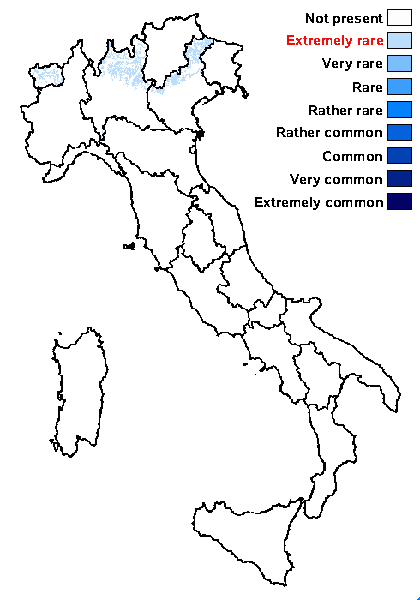
Predictive model
Herbarium samples
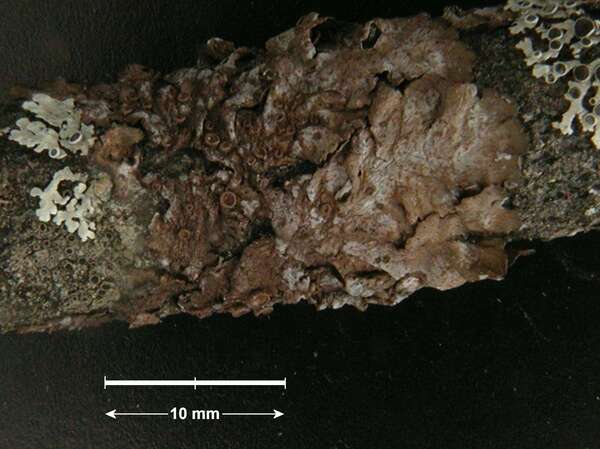

G. Incerti; Owner: Department of Life Sciences, University of Trieste
Herbarium: TSB (27371)
2001/11/26
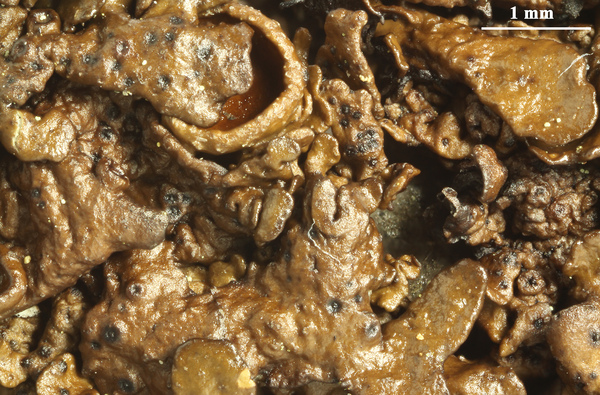

Felix Schumm - CC BY-SA 4.0
[20350], Suecia, Härjedalen, Tännäs Paroecia, Ramundberget, 760 m, in ramulis Betulae. Leg. R. Santesson (24373), 27.06.1973. A. V ZDA: LICHENES SELECTI EXSICCATI NR. 1212
Growth form: Foliose, broad lobed
Substrata: bark
Photobiont: green algae other than Trentepohlia
Reproductive strategy: mainly sexual
Commonnes-rarity: (info)
Alpine belt: absent
Subalpine belt: extremely rare
Oromediterranean belt: absent
Montane belt: extremely rare
Submediterranean belt: absent
Padanian area: absent
Humid submediterranean belt: absent
Humid mediterranean belt: absent
Dry mediterranean belt: absent

Predictive model
| Herbarium samples |


G. Incerti; Owner: Department of Life Sciences, University of Trieste
Herbarium: TSB (27371)
2001/11/26


 INDEX FUNGORUM
INDEX FUNGORUM
 GBIF
GBIF
 DOLICHENS
DOLICHENS
